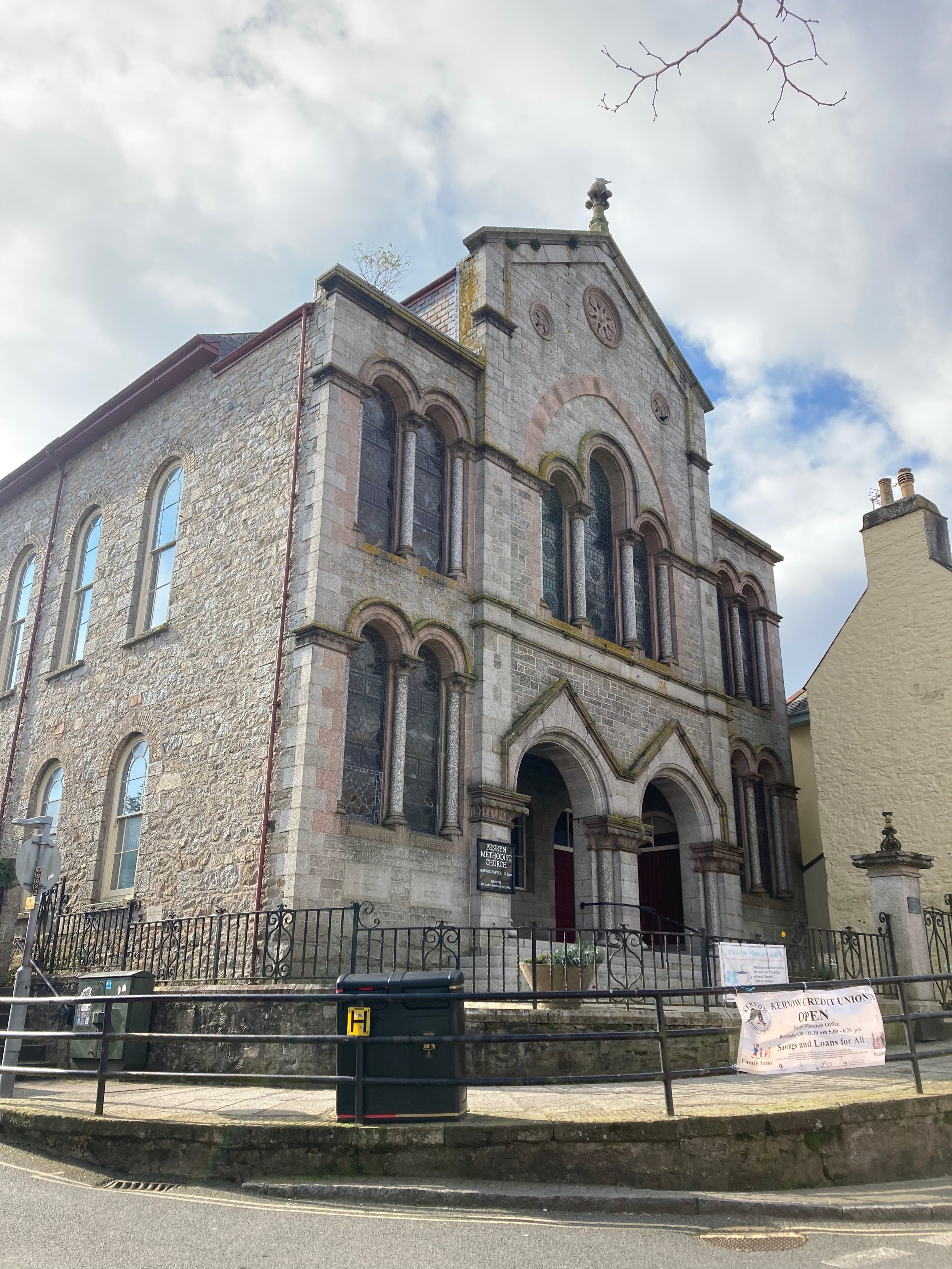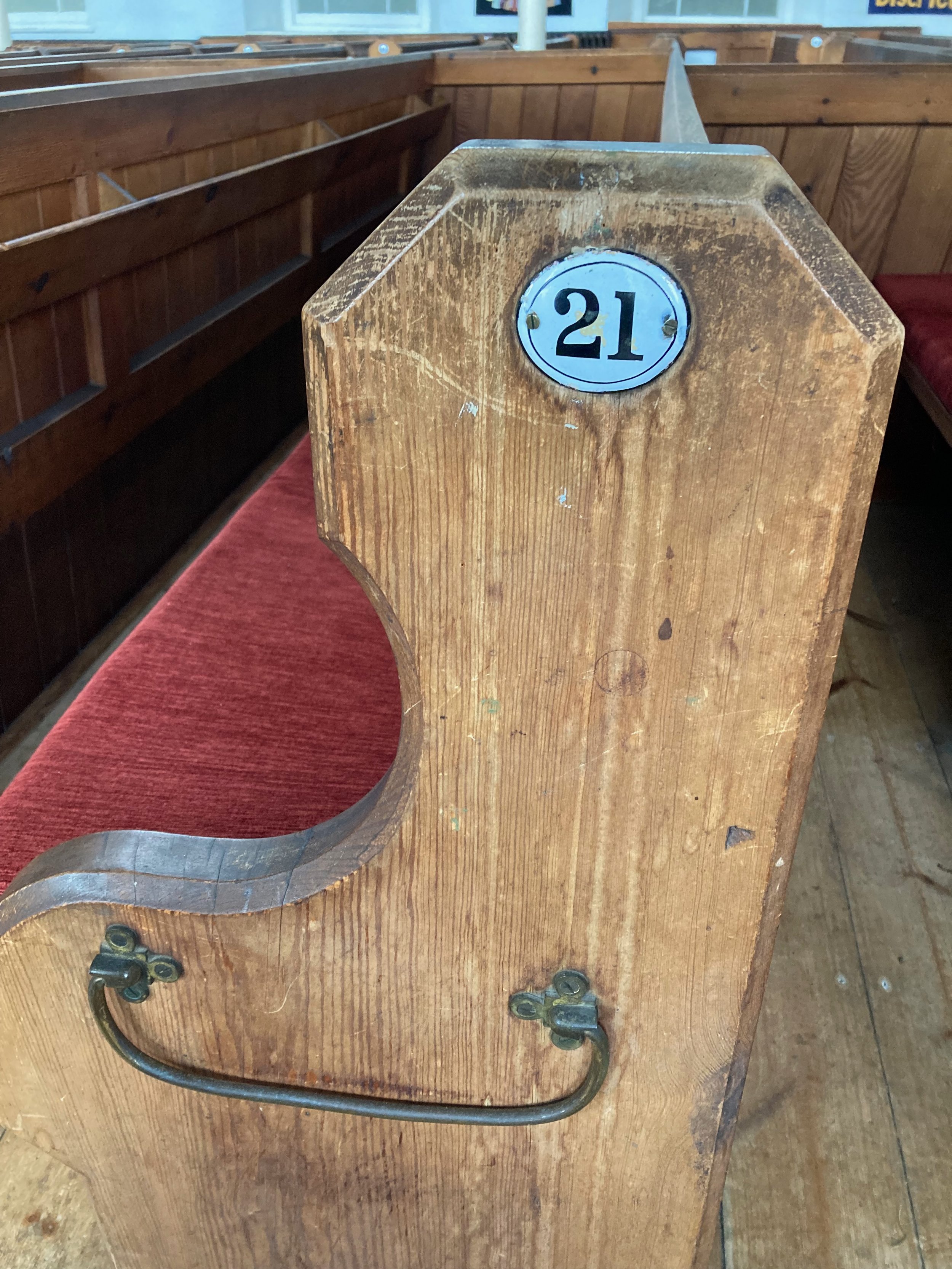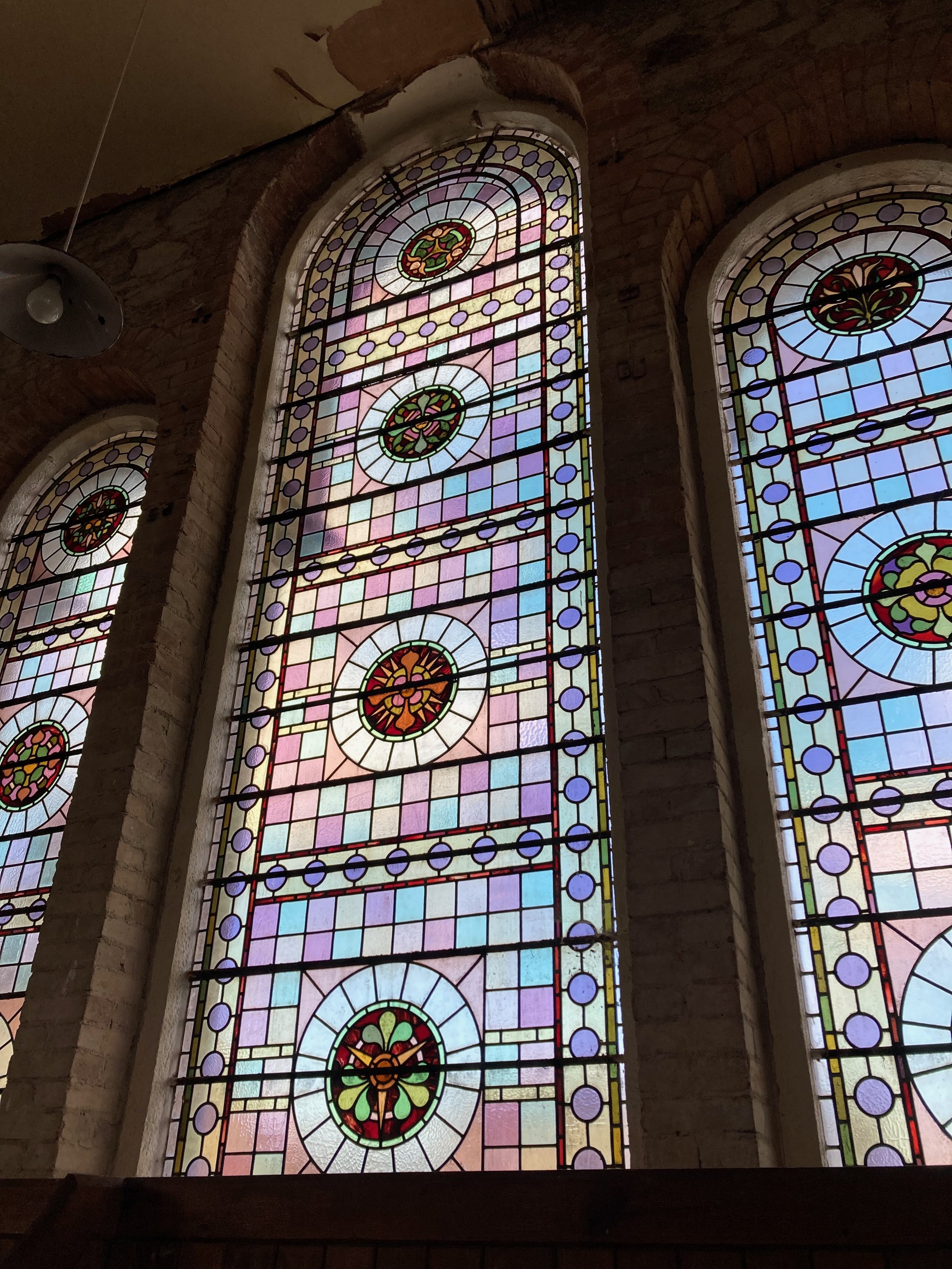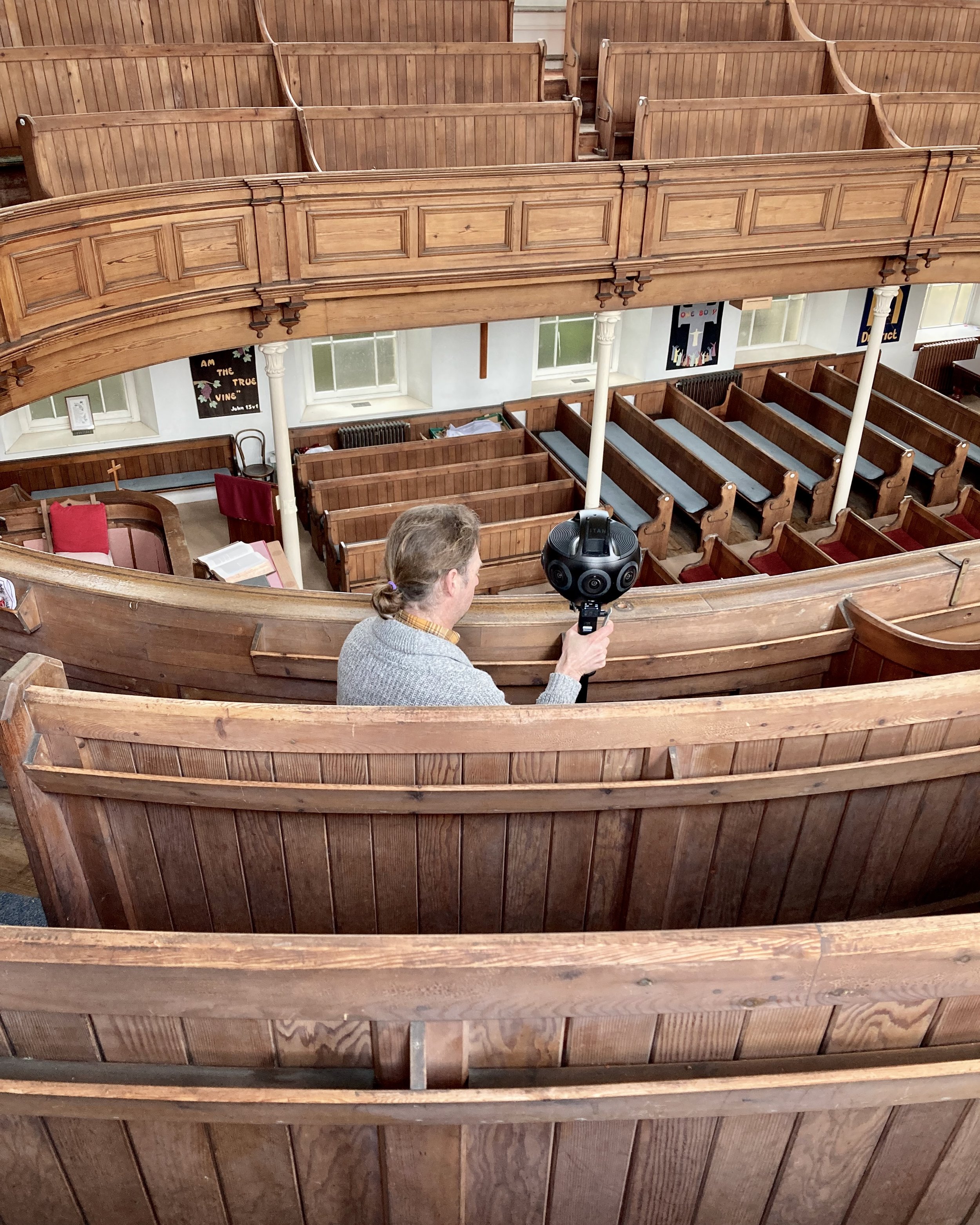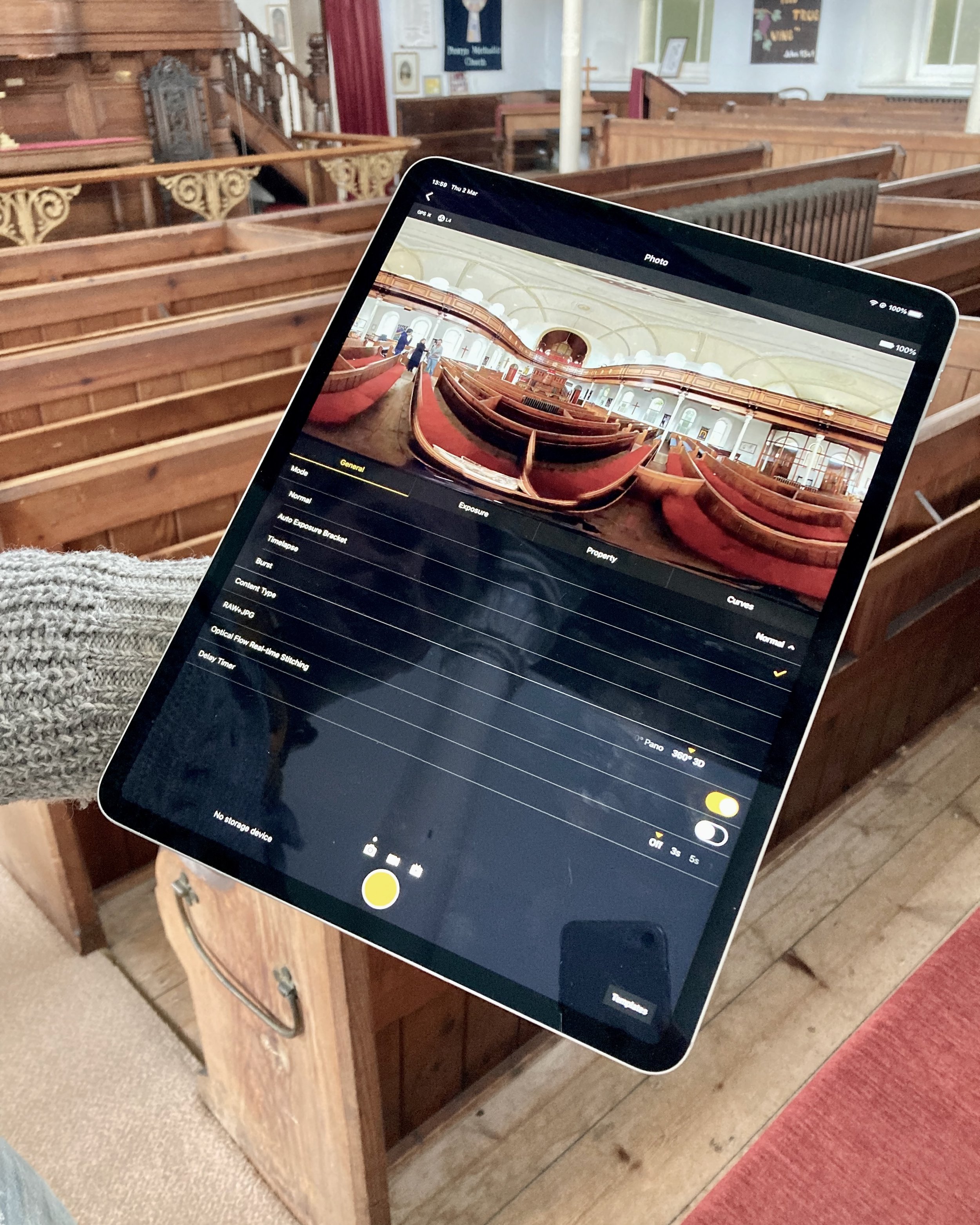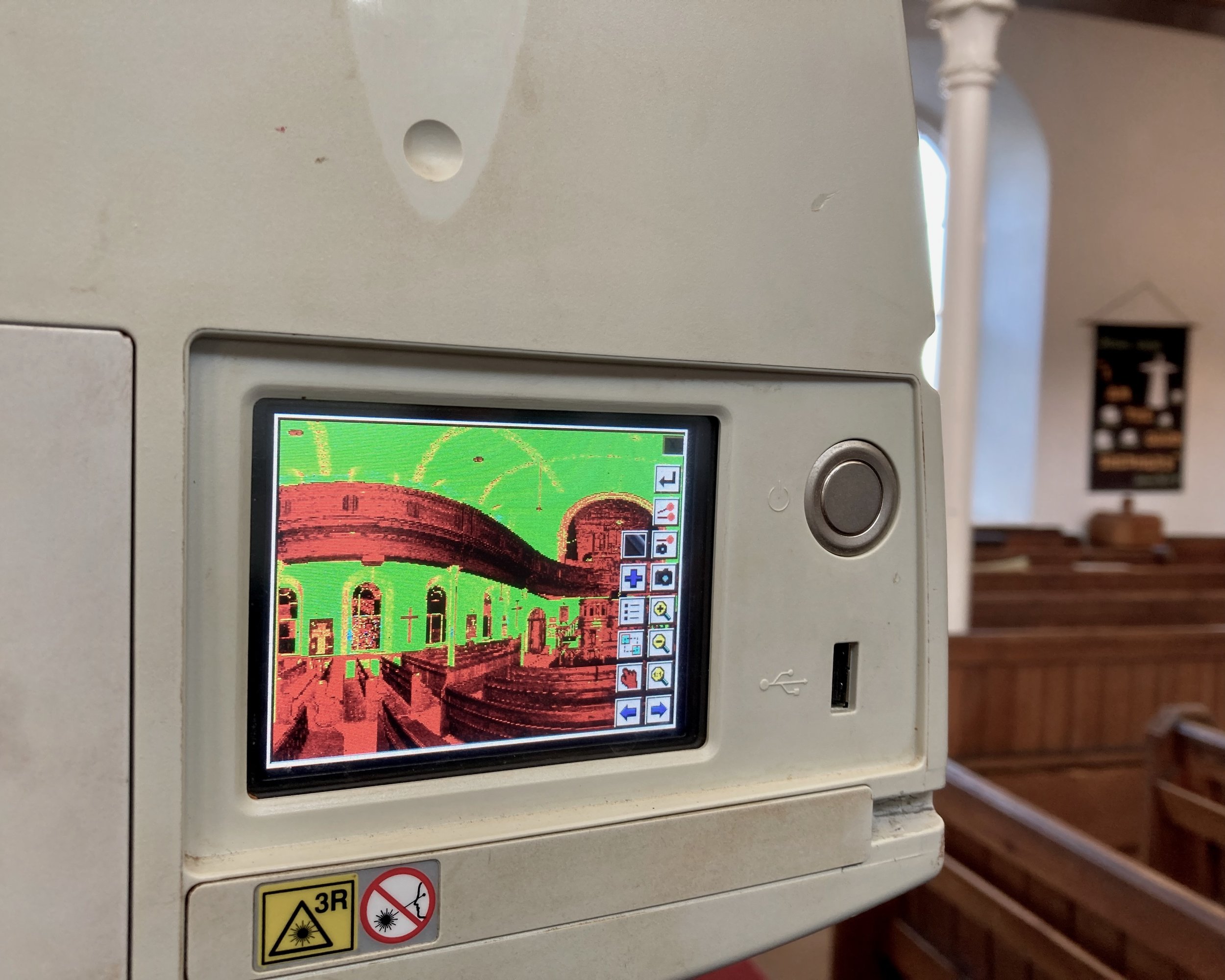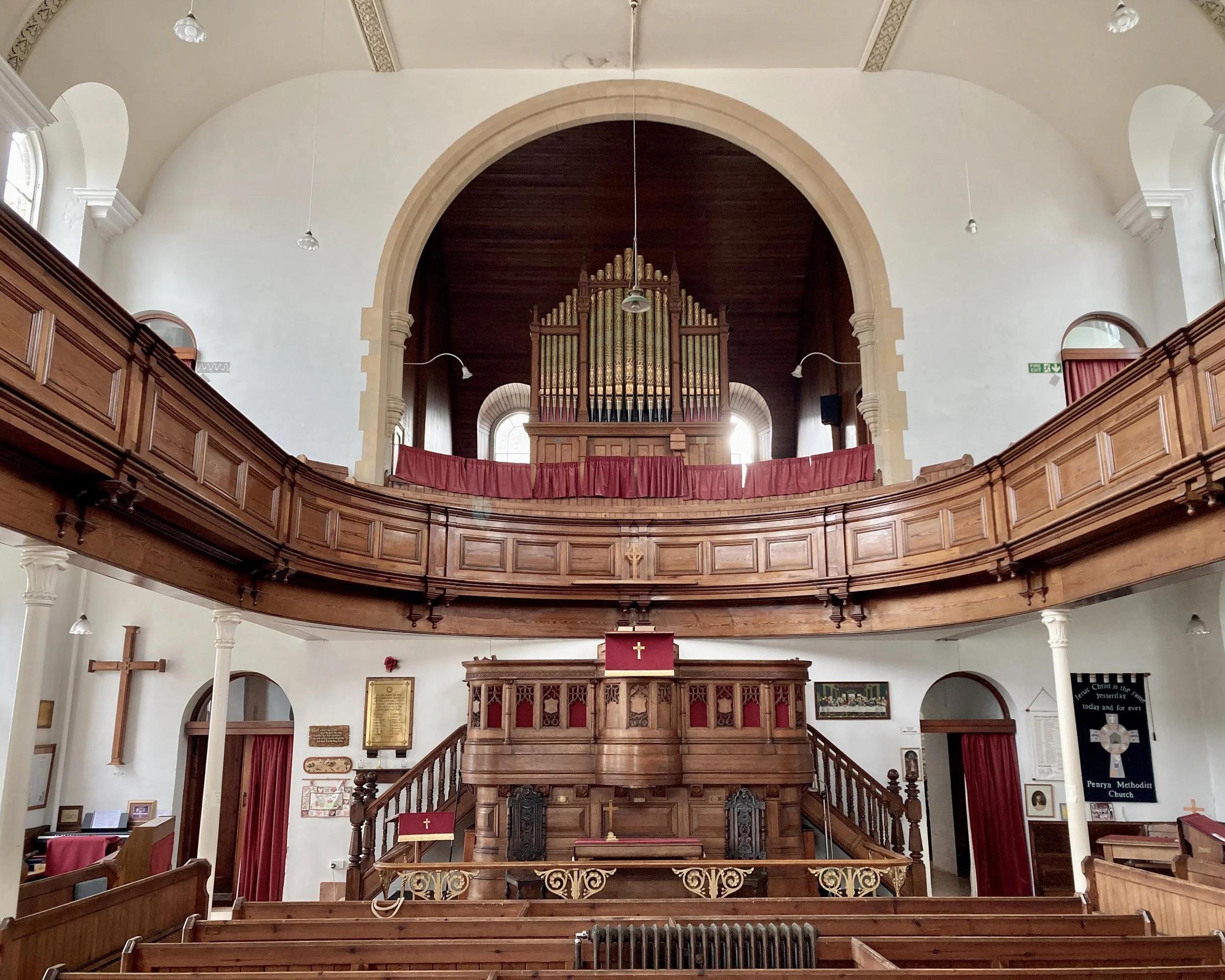Digital Heritage
We work with digital technology to enhance our understanding of a place and preserve our cultural heritage. Through research we are developing new ways of working with digital technologies.
Ghostly image of the Penryn Methodist Church created using a point cloud from a LIDAR scan using a LEICA scanner. © Crow Architecture
Penryn Methodist Church is a Grade II listed building and was built in 1891 to support a growing congregation of methodists, seating at its peak 850 people with additional 150 standing spaces for special occasions. In late 2022 the congregation had dwindled so much that the building was under threat of closure.
As a voluntary member of the Penryn Museum Society we worked with Penryn Museum and Exeter and Falmouth University’s Immersive Business to explore a number of different digital technologies that could capture the space within one afternoon. In doing so we documented the space and created a digital record of the building before the community lost access to this significant heritage asset.
Using an Insta360 Titan camera we captured high resolution 360 photographs, with a Leica LIDAR scanner we captured a point cloud from one location and with a DSLR camera we took a series of images to create point cloud through a process called photogrammetry.
Penryn Museum now has a digital exhibit where visitors can view the 360 images of the inside of the Methodist Church via an iPad or the visitors own phone.
Visitor to Penryn Museum viewing 360 photographs of Penryn Methodist Church
If you can’t make it to Penryn Museum - a visit worth making - then you can view the 360 images here:
Some phones require you to view in the YouTube App. Follow this link. Move your phone around to view the 360 image. If viewing on a computer, scroll up, down and around to view the 360 image. You can also view the image in 3D - change the settings to 3D or if you are a fan of stereoscopic imagery and have a pair of blue and red 3D glasses, you can view it in Anaglyph mode too (this mode may not be available on all iPhones)


